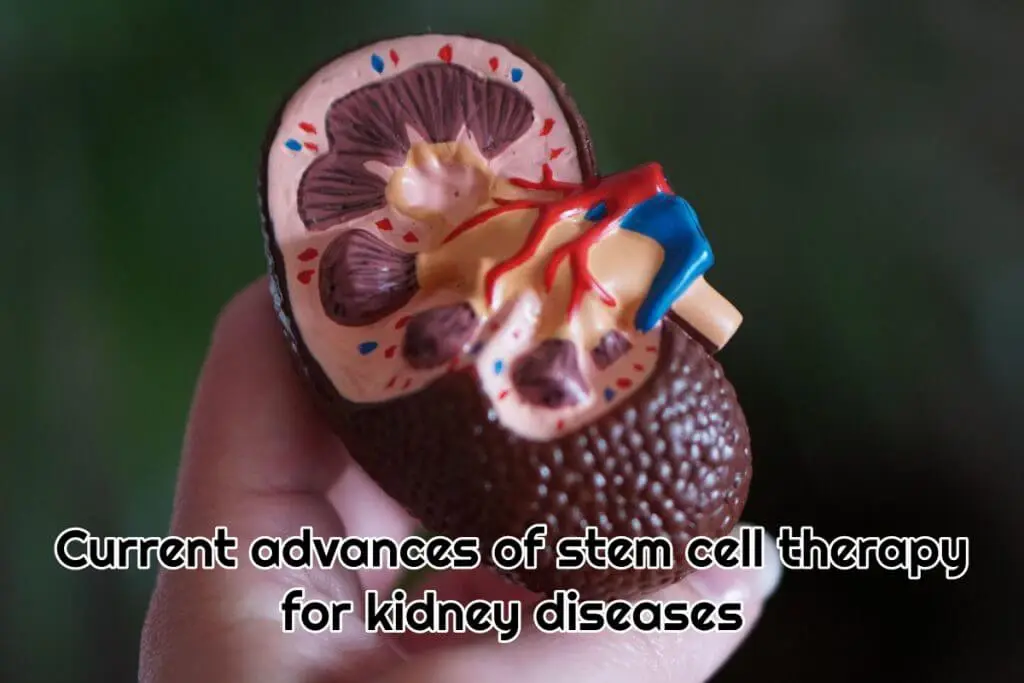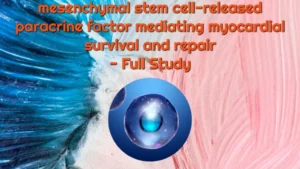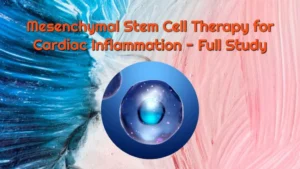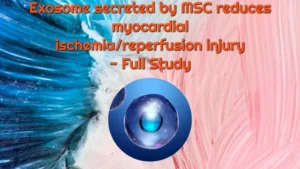INTRODUCTION
Kidney disease is a prevalent global health problem. A new analysis suggested that the
global prevalence of chronic kidney disease (CKD) in the year 2017, was 9.1% (697.5
million cases)[1,2]. The World Health Organization has estimated that as many as 5 to
10 million people die annually from kidney diseases worldwide[3]. By 2040, CKD is
projected to be the fifth leading cause of death worldwide[4].
To date, there has been no significant breakthrough in the medical treatment of
kidney diseases, whereas the current routine treatment consisting of multidrug
therapies can only delay the disease’s progression. These drugs cannot reverse the
progression into the end-stage kidney disease (ESKD). The current therapeutic
repertoire to prolong the lifespan of ESKD patients is limited to kidney replacement
therapy, dialysis or organ transplantation[5]. Due to the high medical cost involved in
dialysis therapy, which also compromises the patients’ quality of life, dialysis is not an
ideal solution. This is primarily because dialysis does not restore or substitute all
kidney functions[6]. Meanwhile, the severe shortage of organ donors and potential
organ rejection risks limit the practice of kidney transplantations[7]. Therefore, it is
crucial that medical researchers explore novel therapeutics to improve the quality of
life for patients with kidney diseases and to potentially cure, reverse, or alleviate the
kidney disease.
Stem cells are defined as cells capable of self-renewal and can differentiate into a
variety of cell types. Moreover, stem cells possess cellular plasticity and easily expand
in vitro, which are the beneficial properties of stem cell therapy. Stem cells have been
extensively explored in treating cardiac, neuron, vascular, immunological, and kidney
diseases[8,9]. In some countries, there are stem cell therapies based on mesenchymal
stem cells (MSCs), which are available as commercial products approved by local
regulatory agencies for specific diseases or health indications[10]. Thus, this form of
intervention can pave the way as the next regenerative medicine for human diseases.
Figure 1 showed an overview of stem cell-based strategies to treat kidney disease.
This present article reviews stem cell-based therapy in kidney regeneration based on
animal models and in vitro studies, as well as discusses its potential for clinical
application and the challenges in translating from animal models to clinical
application.
Current-advances-of-stem-cell-based-therapy-for-kidney-diseases
Current advances of stem cell therapy for kidney diseases and Mesenchymal Stem Cells (MSCs) for Kidney Failure / Renal Failure
MSCs, or as recently referred to as mesenchymal stromal cells, were first discovered by
Friedenstein and his colleagues from bone marrow[60]. Over the years, researchers
have found that MSCs can be isolated from various organs or tissues, such as adipose
tissue[61], umbilical cord[62,63], placenta[64], peripheral blood[65], amniotic fluid[66],
and skeletal muscles[67].
Bone marrow is the most commonly used source for MSCs in clinical treatments,
including treating kidney diseases. However, the use of bone marrow derived-MSCs
(BM-MSCs) became limited because of a high degree of viral exposure, and that the
cell proliferation/differentiation capability significantly decreases as the donor’s age
increases[68]. Therefore, researchers began exploring other types of MSCs for kidney
regeneration. Among the many sources, adipose tissue-derived MSCs (AD-MSCs) and
umbilical cord-derived MSCs (UC-MSCs) have become desirable candidates because a
large amount of the MSCs can be obtained using relatively minimal invasive procedures[
69].
In the field of kidney disease, MSCs are among the most efficient type of cell
population for activating regeneration in a damaged kidney[70]. Pre-clinical reports
have demonstrated the therapeutic potential of MSCs in animal models of AKI and
CKD[71,72]. According to a systematic review of more than 70 articles, MSCs are
among the most effective cell populations to treat experimental CKD[73]. Meanwhile,
in a meta-analysis involving animal models of chronic and AKI, MSCs led to kidney
regeneration despite the variable modes of administration (arterial, venous or renal)
[71]. There is evidence suggesting the beneficial effects of MSCs in blocking AKI-CKD
transition, a term used to describe an incomplete recovery from AKI resulting in longterm
functional deficits, such as CKD[74].
In an experiment performed by Brasile et al[75], when ischemically damaged human
kidneys were perfused ex vivo with MSCs for 24 h, kidney regeneration was
documented. The MSCs-based treatment caused the kidneys to synthesize significantly
lower levels of inflammatory cytokines. Compared to exsanguinous metabolic support
perfusion alone, there was a significant increase in the number of renal cells
undergoing mitosis in the MSCs-treated kidneys[75].
Numerous studies have demonstrated that MSCs can either differentiate into renal
cells in general[76] or specifically into kidney component cells such as renal epithelial
cells[77-80], mesangial cells[81,82], and endothelial cells[83,84].
BM-MSCs
Many studies have demonstrated the efficacy of BM-MSCs in the treatment of kidney
disease using animal models of AKI[85,86], podocyte injury[87], and glomerulonephropathy[
88,89]. Morigi et al[90,91] is among the first groups to demonstrate the
renoprotective role of BM-MSCs and documented the therapeutic potential of human
BM-MSCs in the treatment of kidney diseases, leading to survival in animal models.
Transplantation of human BM-MSCs into cisplatin-induced AKI mice resulted in
Wong CY. Stem cell therapy for kidney diseases
WJSC https://www.wjgnet.com 919 July 26, 2021 Volume 13 Issue 7
markedly improved kidney function and recovery by accelerating tubular proliferation
and reducing the number of tubules affected by apoptosis, necrosis and
tubular lesions. A similar form of protection was conferred by injected BM-MSCs in a
glycerol-induced pigment nephropathy model[77,92] and I/R-induced AKI[86,93].
More importantly, infused BM-MSCs have shown to enhance kidney functional
recovery even when administered 24 h after the injury[94]. Furthermore, BM-MSCs
were more effective in treating AKI in the animal model compared to candesartan,
which is an angiotensin II blocker[95]. In essence, there is good evidence that when
MSCs are transplanted in toxic and ischemic animal models, the cells protect the
animals against AKI and accelerate the recovery phase.
BM-MSCs have also shown promises in the treatment of CKD in animal models.
BM-MSCs prevented the loss of peritubular capillaries and slowed down the
progression of proteinuria (protein in the urine)[96]. During the initial phase of the
immune response before the onset of CKD, these cells also reduced kidney fibrosis
[97]. According to a histological analysis of a rat model with CKD, BM-MSCs reduced
glomerulosclerosis, resulting in preservation of kidney function and attenuation of
kidney injury[98]. Additionally, when animal models with CKD were treated with
BM-MSCs, there were reduced progression of proteinuria and scarce engraftment of
these cells in the kidneys. These observations suggested that these beneficial effects
were probably caused by cytokines or growth factors, which are also known as the
paracrine secretion of mediators[99].
In addition to the ability of BM-MSCs to differentiate into renal cells, more recent
reports suggested that BM-MSCs exert protective and regenerative effects on kidneys
by their paracrine anti-inflammatory, anti-fibrotic, and vascularisation properties[93,
100]. According to reports, BM-MSCs can transfer biological cues via the secretion of
extracellular vesicles (EVs) to promote regenerative processes in injured renal cells
[101-103].
Several studies investigated the effects of BM-MSCs in experimental models of
kidney organ transplantation[104,105]. Most studies focused on the intervention’s
efficacy through prolonged graft survival and inhibition of the rejection process[106-
108]. Given the advantage of BM-MSCs having low immunogenicity and immunoregulatory
properties, BM-MSCs can reduce alloimmune injury and immune suppressionrelated
side effects to optimise preservation of the transplanted kidney’s functions[109,
110].
AD-MSCs
AD-MSCs are highly abundant in adipose tissues and can be easily extracted via
liposuction, a method which is widely used in the clinical setting. Adipose tissue may
become the preferred source of MSCs due to its less invasive procurement and higher
MSCs concentration than those found in the bone marrow[111]. Their allergenic
transplantation via the intra-renal route contributed to a low degree of necrosis, but
caused higher vascularisation of the renal parenchyma in Wister rats[112]. There are
reports on the therapeutic effect of AD-MSCs in AKI-induced animal models. Kim et al
[113] have demonstrated that AD-MSCs reduced apoptotic cell death while simultaneously
reducing the activation of p53, c-Jun NH2-terminal kinase and extracellular
signal-regulated kinase, which are inflammation-related molecules. These effects
resulted in increased survival rate of the AKI-induced animals. Katsuno et al[114]
further discovered that human AD-MSCs cultured in low serum secreted high levels of
hepatocyte and vascular endothelial growth factors. When these cells were
transplanted into AKI-induced rats, they enhanced the attenuation of kidney damage
[114]. Even though adipose tissue is a good source of MSCs, AD-MSCs have been less
effective in proliferative and kidney regenerative activities compared to BM-MSCs
[112].
UC-MSCs
The easy collection of UC-MSCs provides a new abundant source of MSCs. The usage
of UC-MSCs, transforms a medical waste into a beneficial product with clinical applications[
115]. Compared to MSCs from other sources, UC-MSCs have low immunogenicity,
thus preventing the occurrence of immune rejection in allogeneic
transplantation[68,116]. Moreover, UC-MSCs have a greater proliferation capacity
compared to BM-MSCs and AD-MSCs[117,118]. UC-MSCs also show no sign of
senescence over several passages[119], so mass cell production of UC-MSCs is highly
possible without causing the loss of cell potency.
More studies are being performed to demonstrate that human MSCs isolated from
the umbilical cord exert superior therapeutics effects compared to other sources of
MSCs. Researchers also found that when UC-MSCs were implanted into AKI-induced
Wong CY. Stem cell therapy for kidney diseases
WJSC https://www.wjgnet.com 920 July 26, 2021 Volume 13 Issue 7
mice, the cells exerted renoprotective effects by inducing tubular cell proliferation[120]
and promoting glomerular filtration that prolonged the animals’ survival[121].
Meanwhile, in a CKD-induced rodent model, transplanted UC-MSCs inhibited inflammation
and fibrosis while the expression of growth factors was promoted. These
effects protected the injured kidney tissues and prevented disease progression[122,
123].
Other sources of MSCs
In addition to BM-MSCs, AD-MSCs and UC-MSCs, researchers have also used other
types of MSCs that are less commonly studied for kidney regeneration studies. The
efficacy of cord blood-derived MSCs (CB-MSCs) administration in the restoration of
kidney function had been reported in animal AKI models[124]. This study
demonstrated that CB-MSCs promoted kidney regeneration and prolonged the
survival of the animal. Based on this study, the paracrine action of CB-MSCs on the
tubular cells may have been mediated by the reduction of oxidative stress, apoptosis,
and inflammation. Hauser et al[125] and George et al[126] found that amniotic fluidderived
MSCs (AF-MSCs) possess the same characterisation as BM-MCSs, facilitating
functional and structural improvement in a rat model of CKD. Sedrakyan et al[127]
showed the injection of AF-MSCs in mice delays the progression of renal fibrosis.
Meanwhile, in a CKD-induced rat model in a study by Cetinkaya et al[128],
transplanted placenta-derived MSCs (PL-MSCs) alleviated kidney damage and
inhibited fibrosis-induced apoptosis. PL-MSCs were also used to treat kidney injury
and inflammation in lupus nephritis (LN) mice[129].





